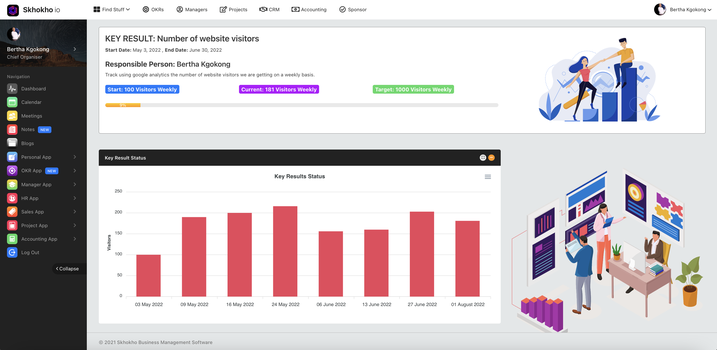What is Growth Hacking: Definition, strategies, examples, tools?
Growth hacks have become popular buzz words that have become so popular over time. But do not fear. This article will remove the confusion and discuss the best growth hacking strategy, examples and tools for your business. Lets go through the basics.
What is Growth Hacking?
In recent years, the term “growth hacking” has become increasingly popular in the business world. But what exactly is growth hacking?
Simply put, growth hacking is a process of rapid experimentation across all aspects of a business in order to find the most efficient way to grow. This can include everything from marketing and product development to sales and customer retention.

The origins of growth hacking can be traced back to the early days of Silicon Valley startups. One of the first people to define growth hacking was Sean Ellis, who in 2010 wrote a blog post about the need for a new type of marketer who was focused on growth above all else.
Since then, the idea of growth hacking has been adopted by many startups and tech companies. One of the most famous examples is the story of how Dropbox grew from 100,000 to 4 million users in just 15 months.
The growth hacking process has since been refined and there are now a number of different growth hacking frameworks that businesses can use to achieve their desired growth.
Does growth hacking replace digital marketing?
Often businesses think growth hacking is merely an alternative to digital marketing. This is no lie! Growth Hackers are marketers, however marketers are not growth hackers. The key difference? Growth hacking is about experimentation and creativity while digital marketing is more about process and discipline.
Growth hacking is a mindset and a toolkit. It’s a combination of marketing, engineering, and data science. The aim is to grow a company through creativity, innovation, and scale.

Growth hacking is all about trying new things and seeing what works. There is no one-size-fits-all solution, which is why growth hacking is so difficult to define. It’s constantly changing and evolving as new platforms and technologies emerge.
Digital marketing, on the other hand, is more predictable and formulaic. It follows a set of best practices and guidelines that have been proven to work.
So, does growth hacking replace digital marketing? No, but it can complement it. By experimenting and trying new things, growth hackers can help digital marketers find new ways to reach and engage customers.
Skills and Qualities of a Growth Hacker
A growth hacking professional has a lot of abilities and talents. These are some of the top ones to ensure success in growth hacking:
1. They have an analytical mindset: A growth hacker is able to see the big picture and break it down into smaller, manageable pieces. They are able to understand how a system works and identify areas that can be improved.
2. They are creative: A growth hacker is able to come up with new and innovative ideas. They are not afraid to think outside the box and are always looking for new ways to grow a business.
3. They are resourceful: A growth hacker is able to find creative solutions to problems. They are not afraid to try new things and are always looking for new and better ways to do things.
4. They are passionate: A growth hacker is passionate about their work and is always looking for ways to improve. They are never satisfied with the status quo and are always looking for new ways to grow a business.
5. They are persistent: A growth hacker is not afraid of failure. They understand that failure is a part of the process and are always willing to try again.
Now that we have discussed the definition, and origins of growth hacking -understand the skills of a growth hacker and know the difference between growth hacking and digital marketing - we can get in to the core of the discussion and start looking at some strategies.
Growth Hacking with OKRs
Growth hacking is a process of rapid experimentation and you need to keep track of those experiments and document your findings using a clear goal setting framework. You can use OKRs to set objectives, and then track the metric over time on a OKR software like SKhokho OKR Software.
What are OKRs?
OKRs stand for Objectives and Key Results, and usually refers to the business strategy tool/framework that can be used in order to measure and track progress towards specific objectives.
How can OKRs be used in Growth Hacking?
Growth hacking is all about experimentation and trying new things in order to achieve rapid growth. In order to track and measure the progress of your growth hacking experiments, setting up OKRs can be extremely helpful.

Some examples of objectives that could be set using OKRs in a growth hacking context could be:
-Increase website traffic by X%
-Increase conversion rate by X%
-Increase new customers by X%
-Increase number of sign-ups by X%
-Increase number of paying customers by X%
These are just a few examples, but as you can see, OKRs can be extremely useful in measuring the progress of your growth hacking experiments over time.
If you're not already using OKRs in your business, then I would highly recommend giving it a try. It could make a huge difference in your ability to track and measure progress towards your objectives.
Skhokho OKR Software
Skhokho OKR software were specifically designed to help you: (1) create, (2) record, (3) measure and (4) track goals and objectives. The goals and objectives can be used to manage your growth hacking experiments.
Growth Hacking Strategies
There are a number of different growth hacking strategies that have been used successfully by companies in order to grow their businesses. Some of the most well-known growth hacking strategies include:
1. Creating a viral loop
2. Creating a compelling offer
3. Leveraging social media
4. Creating a referral program
5. Creating an email list

1. Creating a Viral Loop
A viral loop is a process whereby a company creates a product or service that is so compelling that users are compelled to share it with their friends and followers. In order for a viral loop to be successful, it is essential that the product or service is easy to use and share.
A company that has successfully used a viral loop to grow its business is Dropbox. Dropbox is a file sharing and storage service that offers users free storage space in exchange for referring new users to the service.
Dropbox was able to grow its user base quickly by leveraging its existing users to promote the service to their friends and followers.
Pros: Creating a viral loop is an effective way to grow a business quickly and cheaply.
Cons: In order for a viral loop to be successful, the product or service must be compelling enough that users are willing to share it. This can be difficult to achieve.
2. Creating a Compelling Offer
Another growth hacking strategy that can be used to grow a business is to create a compelling offer that is too good to refuse. This could be in the form of a free trial, a discount, or a free gift.
A company that has successfully used this strategy is Dollar Shave Club. Dollar Shave Club is a subscription service that delivers razor blades to your door each month. When the company first launched, it offered users a free trial of its service.
This was a compelling offer that resulted in a lot of new users signing up for the service.
Pros: Creating a compelling offer is an effective way to grow a business quickly as it can result in a lot of new users signing up for the service.
Cons: Creating a compelling offer can be expensive. If the offer is a free trial, the company will need to ensure that it can convert a high percentage of users into paying customers.
3. Leveraging Social Media
Social media is a powerful tool that can be used to grow a business. A company can use social media to create awareness of its brand, to drive traffic to its website, and to generate leads. A company that has successfully used social media to grow its business is Instagram.
Instagram is a photo sharing app that was launched in 2010. The company grew quickly by leveraging the power of social media. Instagram used social media to create awareness of its brand and to drive traffic to its website. The company also used social media to generate leads.
Pros: Social media is a powerful tool that can be used to grow a business quickly.
Cons: Social media can be time-consuming. A company needs to post regularly and interact with its followers in order to grow its business.
4. Creating a Referral Program
A referral program is a system whereby a company offers its users a incentive to refer new users to the service. A company that has successfully used a referral program to grow its business is Airbnb.
Airbnb is an online marketplace that allows people to list and book rooms and properties. Airbnb grew quickly by offering its users a referral program. Airbnb offered its users a $25 travel credit for every new user that they referred to the service.
Pros: Referral programs are an effective way to grow a business quickly.
Cons: Referral programs can be expensive. The company needs to offer a high enough incentive to get users to refer new users to the service.
5. Creating an Email List
Another growth hacking strategy that can be used to grow a business is to create an email list. A company can use an email list to stay in touch with its customers and to promote new products and services.
A company that has successfully used an email list to grow its business is Amazon. Amazon is an online retailer that sells a wide variety of products. Amazon grew quickly by creating an email list. Amazon used its email list to stay in touch with its customers and to promote new products and services.
Pros: Email lists are an effective way to grow a business. They allow the company to stay in touch with its customers and to promote new products and services.
Cons: Email lists can be time-consuming to create and maintain.
Setting up the Growth Hacker Funnel
The Growth Hacker Funnel is a powerful tool for growing your business. It is a simple, yet effective, way to identify and track the key stages of your customer's journey from Awareness to Purchase.
The funnel is made up of four key stages: Awareness, Interest, Decision, and Action. By tracking the number of customers who reach each stage, you can identify which areas of your marketing are most effective and where there may be gaps.

The Growth Hacker Funnel: Awareness
The first stage of the funnel is Awareness. This is when your potential customer becomes aware of your product or service. It is important to note that at this stage, the customer is not yet interested in your product, they simply become aware that it exists.
There are a number of ways to generate awareness for your product or service. Some common methods include paid advertising, social media, PR, and content marketing.
The Growth Hacker Funnel: Interest
The second stage of the funnel is Interest. This is when your potential customer becomes interested in your product or service. They may start to research your product, compare it to other options, and read reviews.
It is important to capture the customer's interest at this stage and turn it into a sales opportunity. This can be done through effective marketing and sales strategies such as lead capture, lead nurturing, and lead conversion.
The Growth Hacker Funnel: Decision
The third stage of the funnel is Decision. This is when your potential customer decides whether or not to purchase your product or service. They will weigh the pros and cons, and make a decision based on their needs and budget.
It is important to provide your potential customer with all the information they need to make an informed decision. This includes product details, pricing, and customer testimonials.
The Growth Hacker Funnel: Action
The fourth and final stage of the funnel is Action. This is when your potential customer takes action and purchases your product or service.
Congratulations! You have now successfully converted a potential customer into a paying customer.
The Growth Hacker Funnel is a powerful tool that can help you grow your business. By tracking the number of customers who reach each stage of the funnel, you can identify which areas of your marketing are most effective and where there may be gaps.
By using effective marketing and sales strategies, you can turn more of your potential customers into paying customers.
Famous Growth hacking examples
So, what are some examples of growth hacking? Here are 8 of the most effective growth hacking examples of all time:

1. Airbnb
Airbnb is a company that has used growth hacking to achieve incredible growth. One of their original hacks was Craigslist, a user who listed their property on Airbnb could also cross-list on Craigslist. At the same time, they would contact people who listed on Craigslist to consider using Airbnb - the strategy worked well and the company grew.
This type of growth hack is still being used today by many startups - platform integration. If you can offer your clients services from other platforms, you can grow your own by cross feeding between other websites.
2. Dropbox
When Dropbox first launched, they offered users a free trial of their product with extra storage space for referrals. This was an incredibly effective way to grow their user base, as people were motivated to refer others in order to get more storage space.
3. Facebook
Facebook is one of the most popular social media platforms in the world and they have used growth hacking to achieve this. One example is their use of the News Feed. The News Feed is a constantly updating list of stories from friends and Pages that a user follows.
This was a great way to keep users engaged on the site, as they would see updates from friends and Pages they were interested in.
4. LinkedIn
LinkedIn is a professional networking site that has used growth hacking to grow its user base. One example is their use of InMail.
InMail is a feature that allows users to send messages to other users, even if they are not connected on LinkedIn. This was a great way to grow the site, as it allowed users to reach out to other professionals that they may not have been able to connect with otherwise.
5. PayPal
PayPal is a popular online payment platform that has used growth hacking to grow its user base. One example is their use of the Referral program.
The Referral program offered users $10 for every new user that they refer to PayPal. This was a great way to grow the company, as it motivated users to spread the word about PayPal.

6. Pinterest
Pinterest is a social media platform that allows users to share images and videos. They have used growth hacking to grow their user base. One example is their use of Rich Pins.
Rich Pins are a type of Pin that includes extra information, such as the price of a product or the ingredients of a recipe. This was a great way to grow the site, as it allowed users to share more information with their followers.
7. Slack
Slack is a popular messaging platform that has used growth hacking to grow its user base. One example is their use of the Slack App Directory.
The Slack App Directory is a directory of apps that integratess with Slack. This was a great way to grow the platform, as it allowed users to find new and useful apps to use with Slack.
8. Tumblr
Tumblr is a popular social media platform that allows users to share images, videos, and text. They have used growth hacking to grow their user base. One example is their use of the Tumblr Dashboard.
The Tumblr Dashboard is the main interface of the site. It is a constantly updating list of the latest posts from the blogs that a user follows. This was a great way to keep users engaged on the site, as they would see new content from their favorite blogs every time they logged in.
These are just a few examples of how companies have used growth hacking to achieve incredible growth. If you are looking for growth hacking examples for your own business, these are a great place to start.
For Successful Growth Hacking, Make Sure You Create a Product People Actually want
There's no shortage of advice out there on how to grow a startup. But a lot of that advice is rooted in marketing tactics and tricks, rather than actual strategy. And while tactics and tricks can be helpful, they're not going to get you very far if you don't have a product that people actually want.
Creating a product people want is more important than ever. In the past, you could create a product, slap on a bunch of traditional marketing, and hope for the best. But, in today’s digital world, people are more connected than ever before, and they can quickly spot a product they don’t like. If you want to be successful, you need to create a product that people actually want.

Think about it this way: if you're trying to sell a product that nobody wants, you're going to have a hard time no matter how many growth hacking tricks you know. But if you've got a product that people are actually interested in, then you're starting from a much stronger position.
So how do you create a product that people actually want? There's no one-size-fits-all answer, but there are a few things you can do to increase your chances of success:
1. Do your research.
Before you start building anything, it's important to do your research and make sure there's actually a market for what you're creating. There's no point in building a product that nobody wants.
2. Talk to your potential customers.
Once you've done your research and you're confident there's a market for your product, the next step is to talk to your potential customers and get their feedback. What do they want? What do they need? What are their pain points?
The more you understand about your target market, the better positioned you'll be to create a product that they'll actually want.
3. Build something small and iterate.
Don't try to build the perfect product from the start – it's impossible, and you'll just end up wasting a lot of time and money. Instead, start with something small and iterate based on feedback from your target market.
4. Be flexible.
As your business grows, your product will need to evolve to meet the needs of your customers. That means you need to be flexible and willing to change your product based on feedback.
Creating a product people want is essential for success in the new digital world. If you want to be successful, you need to do your research, stay up-to-date on the latest trends, and be willing to pivot. Only then can you create a product that people will actually want.
SaaS Companies - Growth Hackers
Money is always tight for SaaS companies. SaaS companies require a significant investment to scale. However with growth hacking, you do not need to have millions of dollars or a significant workforce to scale.
SaaS companies can use growth hacking to their advantage to scale quickly and efficiently. Growth hacking is all about experimenting with different growth strategies and tactics to see what works best for your company. There is no one-size-fits-all solution for growth hacking, so it’s important to experiment with different tactics to see what works best for your company.

Here are a few growth hacking tips for SaaS companies:
1. Identify Your User Acquisition Channels
The first step in growth hacking is to identify your user acquisition channels. There are a variety of ways to acquire users, so it’s important to experiment with different channels to see what works best for your company. Some popular user acquisition channels include paid advertising, organic search, social media, and email marketing.
2. Create Compelling Content
Once you’ve identified your user acquisition channels, it’s important to create compelling content that will attract users to your site. Content is one of the most important aspects of growth hacking because it’s what will drive users to your site. Content must be compelling and relevant to your target audience.
3. Analyze Your Data
Data analysis is an important part of growth hacking. You need to analyze your data to see what’s working and what’s not. Data analysis will help you identify which growth tactics are working and which ones are not.
4. Test and Experiment
Testing and experimentation are essential for growth hacking. You need to test different tactics and see what works best for your company. Growth hacking is all about experimentation, so it’s important to test different tactics and see what works.
5. Scale Your Business
Once you’ve identified which tactics are working, it’s time to scale your business. Scaling is all about growing your business quickly and efficiently. Growth hacking can help you scale your business quickly and efficiently.









